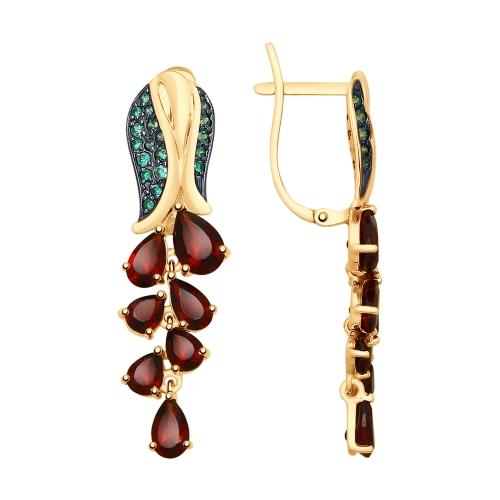
What is Phianite (Fianite)
Fianits (cubic zirconia) compete with natural stones, in their variety of colors and their price. Let us share a few interesting facts about these “diamonds of the new century” to get you excited about your new piece of jewelry!
Even the name of the stone, "fianit" is an interesting fact in itself. It is formed from the acronym FIAN - Physical Institute of the USSR Academy of Sciences(Nauk in Russian). That's where the scientists managed to obtain a modification of zirconium and hafnium oxide - a synthesized high-quality stone that looks the closest to a diamond. Developments by Soviet scientists who have made a real breakthrough in the jewelry industry are still used all over the world!
The decorative properties of cubic zirconia allow it to easily simulate almost any stone of natural origin. An inexperienced eye is unlikely to determine the difference between a colored cubic zirconia and a diamond, emerald, sapphire. By adding oxides to the formula for growing a crystal, you can get stones in 7 primary colors: red, orange, yellow (cerium oxide additive), green (chrome), violet (neodymium), pink (erbium), light brown (titanium).
Phianite has a very rare color in its"palette" - light lavender, which is not found in any mineral of natural origin! The only mineral that can compare to this color is tanzanite.
If you purchased a product with Fianite outside of Russia, it may have CZ (Cubic Zirconia) marking. But in fact, to call fianite "zirconium" or "zircon" is wrong. Zirconium - the name of the metal, zircon - a natural semiprecious stone.
Some phianites, like many stones of natural origin, may have an “alexandrite effect” - the ability to change color depending on lighting from constant viewing angle.
Phianite is used not only in jewelry, but also in other different industries. Due to its high hardness and density, it is used by manufacturers of glass cutters, medical scalpels, as well as optical devices.
Is it a diamond or phianite? Fianite is a fairly hard stone (8 on the Mohs scale; 10 for a diamond), it is also similar to diamond in density and dispersion, which provides an incredible visual similarity between the two minerals. However, it will not be difficult for a professional to distinguish between them. You can also try to do this:
Fianite is a fairly hard stone (8 on the Mohs scale; 10 for a diamond), it is also similar to diamond in density and dispersion, which provides an incredible visual similarity between the two minerals. However, it will not be difficult for a professional to distinguish between them. You can also try to do this:
- Check "in the light": phianite will let sunlight through itself , but inside the diamond you will see a luminous dot
- Density check: if you put two stones side by side, it will be noticeable that the edges of the diamond and phianite are different - they will be sharper on a diamond
- Breath Test: Breathe on a stone. Is it fogged up? then it is a phianite.
- Thermal check: the diamond will not warm up in your hands
Do you have your favorite phianite jewelry?


Leave a comment